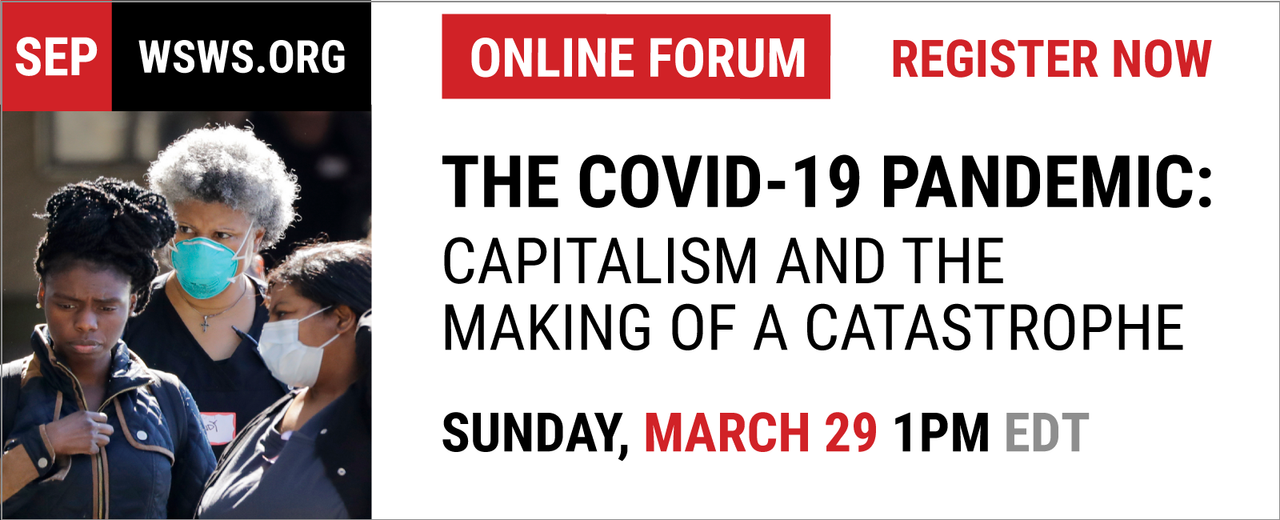Ben McGrath
The government of President Moon Jae-in in South Korea is preparing to oversee massive job cuts as a result of the global financial impact of the COVID-19 pandemic, while making clear that it will provide unlimited funds to prop up big business. The pandemic has exposed in country after country that no capitalist government is willing to protect the working class and the economically vulnerable.
On March 23, the Korea Enterprises Federation (KEF) submitted a plan to the National Assembly demanding the government ease regulations on firing workers. The big business lobbying group cited the COVID-19 outbreak as a pretext. The KEF also called for lowering the corporate tax rate to 22 percent and abolishing the minimum corporate income tax system.
The KEF made clear that its demands went beyond a response to the pandemic and that it views layoffs and government handouts as a necessity for doing business. “Korea’s economic growth rate stood at only 2 percent last year and the real economy is in a state of emergency due to the outbreak of the new coronavirus infection this year,” the KEF stated. Moody’s cut its 2020 economic growth outlook for South Korea to 0.1 percent on Thursday.
Workers in various industries are already feeling the brunt of corporate attacks. Unemployment numbers have grown rapidly in February and March. This month, approximately 30,000 people filed for unemployment benefits through March 19, a 32.6 percent increase over the entire month in 2019. Jeju Province saw a 91 percent increase in new applicants as tourism to the large island has dropped sharply. Daegu, the epicenter of the COVID-19 outbreak in South Korea, saw a 46 percent increase in unemployment applicants in one week.
South Korea’s airline industry currently has more than 10,000 workers on unpaid leave, a quarter of the total industry, due to the fall in travel. While they are being furloughed for 10 days at a time, this is set to rise to 15 days in April. The retail giant Lotte intends to sack 10,000 to 20,000 workers from stores across the country as well. Lotte announced these plans in February, but is using the pandemic as the rationale for mass layoffs.
In a particularly irrational expression of the capitalist system, staffs at small, for-profit hospitals that are not receiving new patients also face layoffs. Rather than mobilizing these medical professionals to help contain the COVID-19 outbreak, physicians and nurses are being forced to take unpaid leave. While nurses are eligible to apply for a paltry 1.98 million won ($US1,635) per month government subsidy, doctors are not.
In many cases, government subsidies will not even be enough to cover monthly expenses. Approximately 640,000 households in Daegu will be offered between 500,000 ($US414) and 900,000 won ($US746) in prepaid cards and gift certificates, depending on family size. The payments will not begin until April 16, with some being extended for three months. Similarly, South Jeolla Province is offering approximately 320,000 households between 300,000 to 500,000 won.
While workers are being hung out to dry, the Bank of Korea (BOK) pledged Thursday to supply the ruling elite with an endless supply of cash. “The Bank of Korea decided to provide an unlimited amount of liquidity to financial firms to help minimize the economic fallout from the spread of COVID-19 and remove uncertainties in the financial market,” the BOK stated in a press release.
BOK Deputy Governor Yun Myeon-sik added that the money would be supplied no questions asked: “It is hard to estimate how much liquidity will actually be supplied. But the plan is to supply the entire amount requested and without a limit.” Such measures are the first of their kind and exceed even those taken during the 1997–1998 and 2008 financial crises.
The Korean Confederation of Trade Unions (KCTU) is colluding with the government to mislead workers into believing that the Moon Jae-in administration will take measures to protect their livelihoods.
On March 25, representatives from the KCTU met with officials from the Ministry of Labor for a second round of talks, ostensibly for the purpose of discussing workplace protections. The ministry stated that it intends to operate a website from April 6 to allow workers to anonymously report workplace violations, such as being forced to take unpaid leave. Such a system will be used to sweep reports under the rug while attempting to convince workers to remain quiet.
The KCTU put its stamp of approval on the ministry’s plans by calling for “special labor supervision” at worksites that have forced workers to take unpaid leave. The KCTU’s policy director Lee Ju-ho, who took part in the meeting, stated: “In order for the government’s COVID-19 measures to operate well at work sites without any blind spots, we plan to discuss and examine them through these talks [with the Labor Ministry].” He added: “We will quickly promote areas where improvements in the law or system are needed by discussing them with the relevant authorities.”
In other words, the KCTU, which often postures as militant and anti-capitalist, is providing the Moon administration with cover as it presides over mass layoffs and unprecedented corporate bailouts.
These attacks are not simply the result of the government’s response to the pandemic. The assault on workers in the automotive and shipbuilding industries, public sector workers, and others has continued unabated since Moon took office May 2017.
During this time, the KCTU has sown illusions in the government, while defending big business. This past Wednesday, the KCTU-affiliated Korean Metal Workers Union agreed to a contract with GM Korea to deny workers any wage increases, while leaving the door open for company reprisals against workers who took part in strikes last year.
Korean workers must reject all of these attacks and join with their class brothers and sisters internationally to defend their rights to decent and safe jobs and to demand that the response to the COVID-19 pandemic is controlled democratically by the working class.






